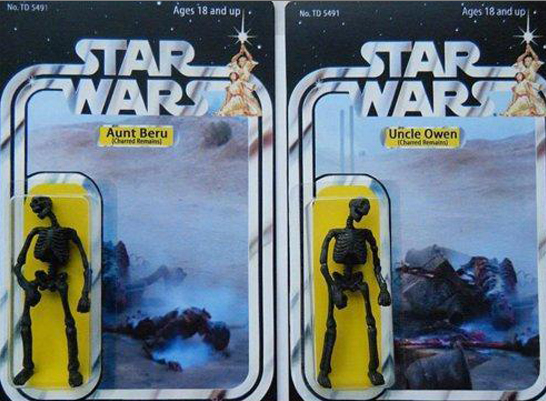The neo-conservative critics of leftist critics of mass culture ridicule the protest against Bach as background music in the kitchen, against Plato and Hegel, Shelley and Baudelaire, Marx and Freud in the drugstore. Instead, they insist on recognition of the fact that the classics have left the mausoleum and come to life again, that people are just so much more educated. True, but coming to life as classics, they come to life as other than themselves; they are deprived of their antagonistic force, of the estrangement which was the very dimension of their truth. - Herbert Marcuse (‘One Dimensional Man’, p. 64)
Following Mike’s thoughts on George Lucas’ Star Wars, this post focuses on an inherent paradox of Seabrook’s article and brings the discussion back to Adorno’s pessimistic view on the eliminated potentiality of artistic autonomy. Let’s ask the question again: can film be considered an autonomous work of art that exceeds its existence as a commodity? Seabrook’s article hints at a self-contradictory answer: yes and no.
Seabrook explores the blurry relationship between marketing and culture and in their convergence he recognizes the radical phenomenon of Lucas’ empire. He presents an aesthetic and philosophical axis of George Lucas’ original filmic aspirations by emphasizing director’s personal creative vision (a non-conformist auteur vis-a-vis oppressive film studios) and his desire to control the means of cinematic production (his “Marcusian credentials”) (140). Drawing parallels between the director’s life and Star Wars’ plot, Seabrook calls Lucas a “rebel artist-outsider who had conquered the evil empire of his own” (134). Paradoxically, the only way Lucas could afford himself extreme artistic freedom was by ‘conquering’ Hollywood using its own methods; he “succeeded in creating more than a movie - he had created a brand” (133).
In effect, Lucas successfully eliminated the distance between himself and the fruits of his own labor (he controls and owns his films from pre- to post-production), while triggering a plethora of consumer commodities and an entire Star Wars way of life. These, in turn, reflect Naomi Klein’s (and The Persuaders’) critique of inflated forms of branding, advertising, and marketing. Nowhere is this more applicable than to the ever-expanding Star Wars epic landscape. In order to satisfy a priori consumer desires of Star Wars aficionados, LucasArts President Sorensen continuously explores new ways of commodifying Lucas’ original and antagonistic vision. Any brief shot in the movie affords an opportunity to create new toys, computer games, stuff. Marcuse would not approve.
In one of the scenes from Star Wars: A New Hope, young Luke discovers charred skeletal remains of Uncle Owen and Aunt Beru. Their desecrated remains appear on the screen only for a few seconds and imply an unimaginable cruelty of stormtroopers. 
This is enough for the “Lucas empire” to recognize the demand and meet it swiftly:
No comments:
Post a Comment